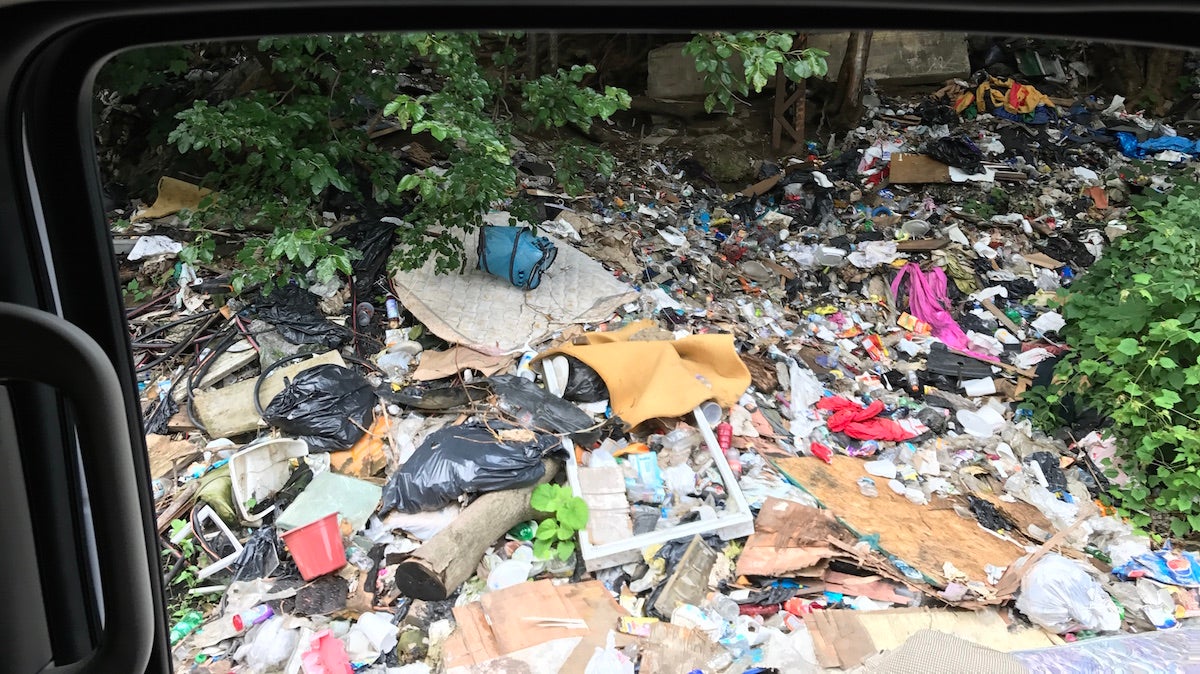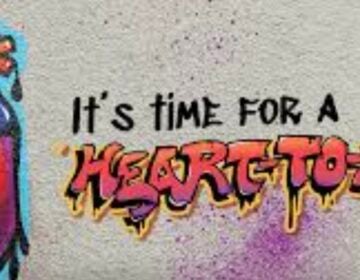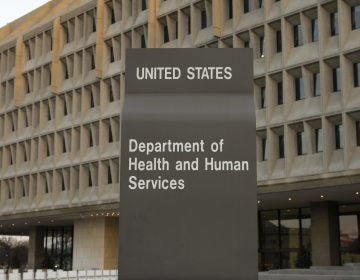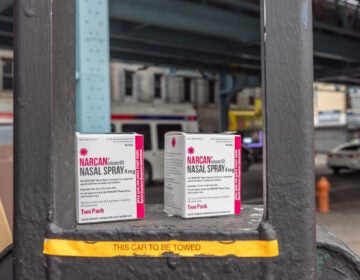Philadelphia and Conrail launch work to clear railroad heroin encampment

Trash near a heroin encampment is seen from a Conrail vehicle on Thursday. (Joel Wolfram / WHYY)
Philadelphia and Conrail are starting work today on a plan to clean up a notorious stretch of tracks in the Kensington and Fairhill neighborhoods where heroin users have lived and shot up for years. Starting from the eastern end of the cleanup zone at Kensington Avenue, construction crews will clear-cut the dense vegetation that grows along the slopes of the railroad gulch before scooping up abandoned furniture, used tires, and tons of other junk littering the mile-long stretch of tracks, said Jocelyn Hill, a Conrail public affairs officer. In areas with heavy concentrations of used needles, Hill said specialized crews will remove the hazardous waste before the rest of the work begins.
But the brush-cutting and cleanup work won’t begin “in earnest” until Tuesday, Hill said, as Conrail will be working on Monday to move the heavy landscaping and construction equipment it’s using into a “staging area” near Trenton Street and Lehigh Avenue.
Meanwhile, the city is deploying three mobile trailers today at 2nd Street and Indiana Avenue to create a temporary hub where the drug users being displaced by the cleanup can access health care and social services. At the hub, users will be able to hear about housing and drug treatment opportunities, and receive medical care such as HIV and Hepatitis C testing and treatment for wounds caused by injection drug use. Donated food and water will also be available.
Outreach workers at the hubs will be able to help individuals sign up for Medicaid and obtain identification cards. ID’s are necessary for accessing medication-assisted treatment, said Joanna Otero-Cruz, the city’s deputy managing director for community services. That’s the term for treatment using Methadone, Vivitrol or another medication designed to help them wean themselves from street opioids.
Workers from the city and Prevention Point Philadelphia stepped up efforts months ago to help people who live or use drugs in the railroad gulch. At the beginning of May, there were 78 people living along the tracks, according to the director of the city’s Office of Homeless Services, Liz Hersh. The area is also frequented by many more people who go down to the tracks to use heroin purchased on nearby corners.
Otero-Cruz said that so far, 84 out of the 361 people outreach workers engaged with at the tracks have accepted help getting treatment. Those figures cover through the end of June.
Some say that drug users have already started to move to other pockets of the neighborhood as word spread about the impending cleanup. But when Conrail workers surveyed the mile-long corridor of the cleanup zone on Thursday, it was clear that the area remains popular.
Tony Dragani, an officer for the Norfolk Southern Police Department, which patrols the Conrail tracks, said that the encampment around the 2nd Street bridge sees the most activity.
“There could be 30 to 40 people here some days,” Dragani said.
Altogether, there were close to a dozen people visible along the tracks as Conrail workers drove through the cleanup zone. Most of them were clustered near encampments under overpass bridges at A, Front, Mascher, and 2nd streets. Dragani said there may have been more people hidden in dense vegetation that grows up the slopes on either side of the tracks.
Conrail and the Philadelphia Police Department will have four officers combing the corridor ahead of cleanup crews to remove anyone who remains before brush-cutting machines and excavators arrive.
“We don’t want anybody in the area when the heavy equipment is working,” said Inspector Ray Convery of the Philadelphia Police Department, noting that one of the department’s goals is to prevent injuries while the work takes place.
Convery said officers would cite anyone they encounter at the tracks for trespassing and refer them to the extra outreach services available during the cleanup. He said he doesn’t expect officers to encounter many people during the first days of the cleanup, as it will take time for the cleanup work to reach the bridges were the most people congregate.
Otero-Cruz said she expects the demand for outreach services to grow when the cleanup progresses to the more populated areas.
The outreach hub at 2nd and Indiana, however, will only be open for the first three days of the the project. Though it’s situated next to the biggest encampment of drug users, it’s far down the corridor from where the cleanup work begins.
Another outreach trailer at A Street and Tusculum Street will be open for the duration of the cleanup, Otero-Cruz said, where people will be able to access the same services being offered at the bigger hub at 2nd and Indiana.
“We’ll continue to assess what the needs are to make sure we can meet the demands for service,” Otero-Cruz said.
The local nonprofit Impact Services is providing the site for the trailer at A and Tusculum. Casey O’Donnell, the organization’s CEO, said the outreach facility represented the “sustained effort that’s probably needed.”
“Having a touchpoint where people have been living and where they’ve been using and where they’ve been buying, and bringing that opportunity as close to them as possible is what we’re trying to accomplish,” O’Donnell said.
WHYY is your source for fact-based, in-depth journalism and information. As a nonprofit organization, we rely on financial support from readers like you. Please give today.





